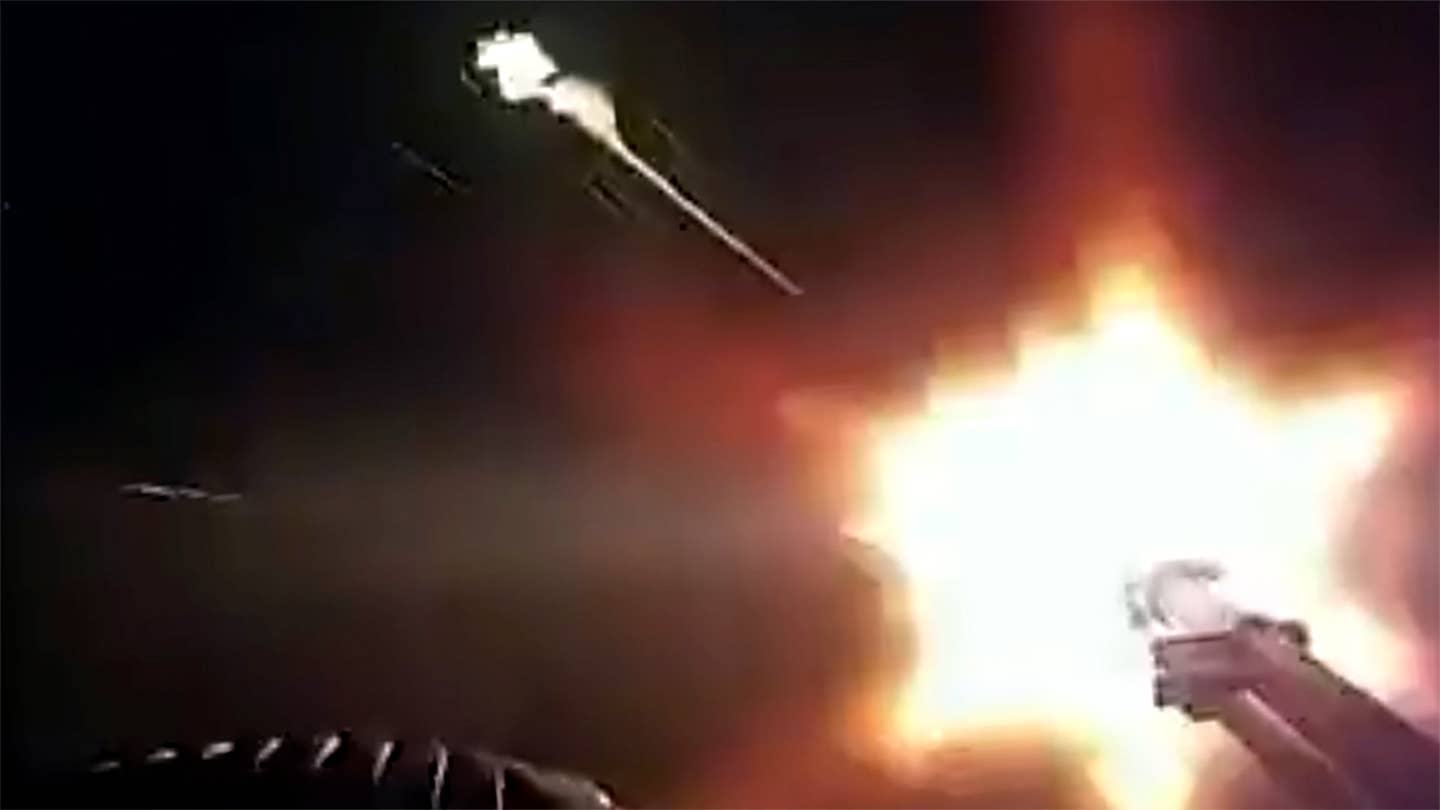Gepard self-propelled 35mm anti-aircraft guns, once widely seen as antiquated, have played a critical role in protecting Ukraine’s airspace.

A new video shows just what it looks like from a first-person point of view when a German-made Gepard self-propelled anti-aircraft guns (SPAAG) lets loose a barrage 35mm shells from its twin barrels and splashes a Shahed-136 kamikaze drone.
The video is a reminder of the very important role that the Gepards have played so far in Ukraine’s air defense. The Gepard has proved highly effective against Russian drones, and in some cases cruise missiles, owing to its intended use in a point defense role against various low-flying aerial targets.
According to Ukraine’s Southern Air Command, which posted the video to its official Facebook page yesterday, the footage depicts one of the systems shooting down two of Russia’s Iranian-designed Shahed-series kamikaze drones. The caption reads: “Video of the combat work of the soldiers of the ‘Southern’ air command against the ‘Shahed-136/131’ attack UAVs on the night of September 7, 2023 in Odesa [Oblast, southern Ukraine]! The German ‘Gepard’ hunted down enemy ‘shahedis’!” Iran has been providing Russia with Shahed drones since September last year.
Based on the chassis of the Leopard 1 main battle tank, Gepards — which translates to cheetah in English — feature twin radar-aimed 35mm automatic cannons, mounted on a single turret. The German variant sports an S-band search radar and a Ku-band tracking radar. These radars are critical to the Gepard’s ability to locate, track, and engage targets at night and amid poor weather conditions. As we’ve highlighted in the past, many of Russia’s Iranian-made kamikaze drone strikes occur at night to help improve the types’ survivability.
Examples of how Germany’s Gepards have been put to use in Ukraine against low-flying aerial threats can be seen below.
To date, six Gepards have been delivered to Ukraine by Germany, with another 46 pending delivery. Germany announced as far back as April 2022 that it would send a number of its since retired Gepards to Ukraine, which were originally produced for what was then the West German military during the Cold War. Visual confirmation that German Gepards were being used on the battlefield in Ukraine came later in August 2022.
A German Gepard variant. Hans-Hermann Bühling via Wikimedia Commons, CC BY-SA 3.0
More recently, the U.S. Army has bankrolled the transfer of an undisclosed number of Gerpards to Ukraine from Jordan, in a contract worth $118,375,740. Unlike the German variant, Jordan’s stockpile of Gepards are ex-Dutch. Acquiring a total of 95 vehicles, starting in the 1970s, the Dutch Armed Force’s Gepards feature a visually distinct radar configuration compared to their German counterparts. Dutch Gepards boast an X-band search radar and a tracking radar that can operate in the X and Ka bands. In 2013, the Netherlands agreed to sell 60 retired Gepards to Jordan as well as 350,000 rounds of 35mm ammunition, amongst other assets.
A Dutch Gepard during an exercise in 1990, with its distinctive radars at the front and rear of the turret. Dutch Ministry of Defense
Sourcing the necessary ammunition for Ukraine’s German Gepards during the war has proved difficult. As we’ve noted previously, the vehicles’ 35mm automatic cannons were produced in Switzerland, as are significant stockpiles of shells for them. That country’s policy of neutrality in regard to the conflict forced the German government to pursue a deal with domestic defense contractor Rheinmetall to restart production of 35mm ammunition earlier this year.
The first batch of said ammunition was recently delivered to Ukraine, with 40,000 rounds promised by the end of 2023 as part of the deal. So far, Germany has delivered 86,122 rounds of Gepard ammunition from Bundeswehr and industry stocks, according to the latest government figures, with 289,920 rounds still to be sent.
35mm ammunition rounds handled by the military of Brazil. Ministry of Defense of Brazil
Alongside other short-range air defense (SHORAD) capabilities given to Ukraine by Western allies, such as the AN/TWQ-1 Avenger, of which 20 were supplied by the U.S. starting in late 2022, Gepards remain critical assets for the defense of key cities and infrastructure deep within Ukraine. As they are highly mobile, they can easily be maneuvered to forward areas as needed. This is also significant given how few of them have so far arrived in the country.
There is also an important cost factor to their use against loitering munitions such as Shahed kamikaze drones, too, which are relatively cheap for Russia to procure. Shahed-136 drones reportedly cost around $10,000 to $20,000 apiece. The price per-shot against these drones when using Gepard ammunition is far more cost-effective compared to using expensive man-portable air-defense systems (MANPADS) or larger surface-to-air missiles (SAMs).
The threat of Iranian-designed Kamikaze drones is not going away, either. Russia is standing up full-scale production within its own border in order to make 6,000 more by the summer of 2025.
With the promise of more Gepards to be delivered in the future, and more ammunition for the type on the way, these systems, which were up until recently viewed broadly as antiquated, will continue to play an important role in the defense of Ukraine’s skies.



